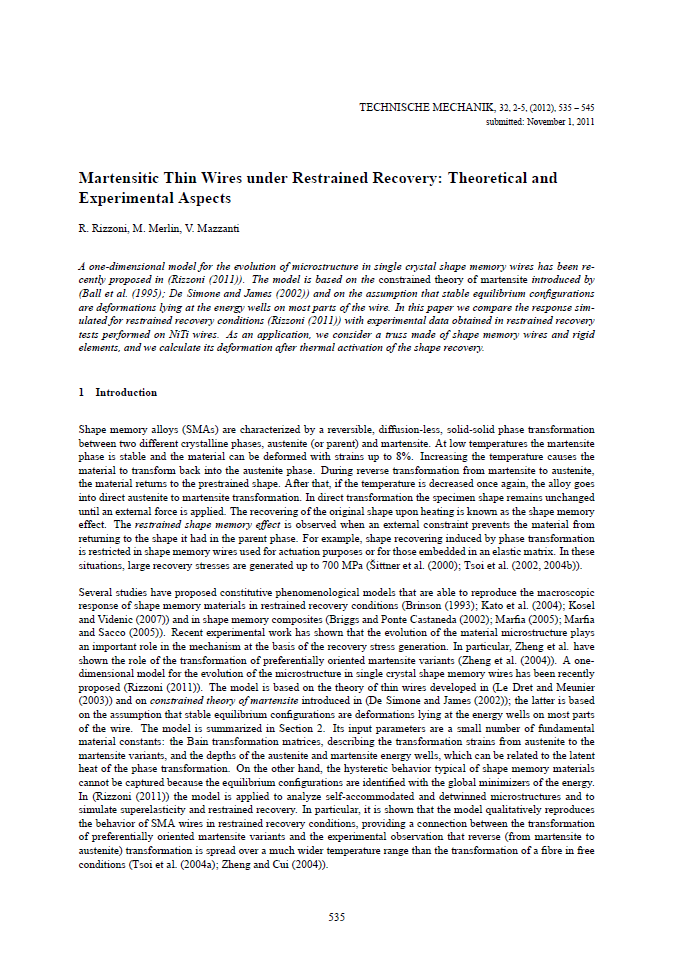Martensitic Thin Wires under Restrained Recovery
Theoretical and Experimental Aspects
Abstract
A one-dimensional model for the evolution of microstructure in single crystal shape memory wires has been recently proposed in (Rizzoni (2011)). The model is based on the constrained theory of martensite introduced by (Ball et al. (1995); De Simone and James (2002)) and on the assumption that stable equilibrium configurations are deformations lying at the energy wells on most parts of the wire. In this paper we compare the response simulated for restrained recovery conditions (Rizzoni (2011)) with experimental data obtained in restrained recovery tests performed on NiTi wires. As an application, we consider a truss made of shape memory wires and rigid elements, and we calculate its deformation after thermal activation of the shape recovery.





